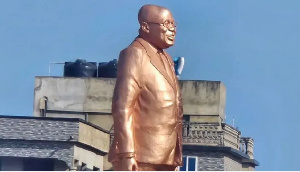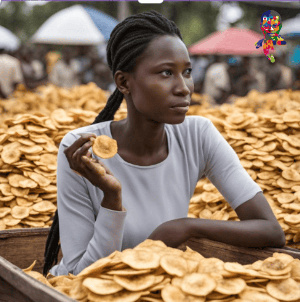Africa News of Monday, 21 August 2023
Source: theeastafrican.co.ke
Forest carbon projects are the newest craze: A blessing or curse?
Carbon offsetting is increasingly becoming a focal source of climate finance and will be a key discussion point at the Africa Climate Summit in Nairobi early next month, to set the agenda for the upcoming COP28 in Dubai, United Arab Emirates.
In Taita Taveta County in Kenya’s Coast region, the Kasigau Corridor Reducing Emissions from Deforestation and forest Degradation (REDD+) project one of the ventures making millions from carbon offsetting through community-led conservation, was the world’s first project of its kind and the largest in the region, covering over 200,000 hectares of land, mostly communally owned dryland forests that were previously used as livestock rearing and fattening ranches.
Having issued over 18 million carbon credits worth about $180 million so far, the project has been hailed as a good example of how others across the globe should be developed, especially in terms of sharing benefits with communities.
But The EastAfrican has found a disconnect between what the community landowners in the area believe and how the revenues generated by the project are actually shared.
The Kasigau Corridor Project covers 16 conservancies, most of which are jointly owned by some 5,000 members of the communities around them, who initially contributed livestock or bought shares to co-own the ranches that have now been turned into conservancies.
A spot check by The EastAfrican in the area found that the community leaders are intentional about conserving the land and are constantly shunning investors who seek to mine the iron ore and gemstones in their mineral-rich land.
Gamechanger
“Our land is full of minerals,” said Afiz Nyambu, Chair of Mgeno Conservancy, which is part of the project. Even where we stand, there are minerals beneath. But the moment we allow mining, this land will cease being a conservancy and we will forget about carbon credits.”
Their motivation to conserve the forests is hugely influenced by the millions of dollars that come from carbon offsetting, which they would lose should they start mining.
Leaders who spoke to The EastAfrican said they believe this is a longer-term benefit, compared with mining.
Many of them term the carbon project a game-changer and credit a dozen improvements in their communities to the funds that come with the carbon offsetting. They believe they are getting the best they possibly could.
According to Steve Mwaisaka, manager of the Kasigau Conservancy, the communities bought into the idea because they understood it could provide them with the much-needed resources to deal with the persistent human-wildlife conflict as well as improve their livelihoods.
All they had to do was to stop attacking or hunting wildlife for meat and cease felling the trees in the ranches for use as firewood or for charcoal burning.
Indeed, water projects have been completed, a number of classrooms constructed in nearby schools, children awarded bursaries and cases of wildlife roaming into human dwellings are less frequent as the animals have been provided with water within the conserved areas, thanks to the carbon funds.
But the exact percentage of the revenues from the carbon credits that is channelled to these projects is not entirely clear and the community landowners appear to be reading from a different script as Wildlife Works, the company that manages the project.
Valuable lessons
During an interview with The EastAfrican in July, both Mwaisaka and Nyambu said that every year, the net revenue from the sale of carbon credits is split equally three ways: one third to the landowners, a third to Wildlife Works, and a third to the communities to cover such projects, which they decide themselves through their elected representatives.
It is not just the community landowners who believe this.
A 2014 report by research organisation World Agroforestry also said this is how the revenues are shared, terming it “promising" and would provide valuable lessons in the development of a national REDD+ strategy in Kenya.
But this is not the case.
The EastAfrican has established that the actual revenue-sharing mechanism is different from what the landowners and their leaders believe as well as what is in their contracts with Wildlife Works.
According to a document Wildlife Works shared with The EastAfrican, in reality, landowners get a third of the net revenue as agreed, then the next 30 to 40 percent covers the Wildlife Works’ operational costs in the project.
Half of the remainder covers Wildlife Works’ global corporate costs and return to investors, and the other half — about 10 to 15 percent of total revenues — is what is allocated to the local communities towards implementing community development projects.
Nonetheless, this is not reflected in the contracts that Wildlife Works signed with the conservancies in 2009.
The contracts seen by The EastAfrican only specify that a third of the net revenues will go to the landowners, without specifying what share the communities should get or how the remaining two thirds is to be spent.
So, why do the landowners believe something different from both what is in the contract and Wildlife Works’ official position? Wildlife Works says it is because that is what they were told in the beginning.
“Early on in the project, we tried to simplify the revenue share description by using a ‘third to community landowners, third to communities and third to Wildlife Works’ explanation,” Mike Korchinsky, Wildlife Works’ CEO and founder told The EastAfrican.
“But as we experience fluctuating sales volumes, sale prices, and operating expenses while the market expands and contracts, this explanation did not capture the revenue share with enough accuracy. We have since changed the explanation.”
Korchinsky said they have tried to explain the actual revenue-sharing formula to the landowners for years, but it is still the unofficial version they were told initially that is popular among them.
Based on this official revenue-sharing formula, it would mean that the share of the revenues that goes to the community landowners and development projects is at most 45 percent, contrary to the information on several promotional materials by Wildlife Works and its carbon buyers, which say “majority” goes to communities.
For instance, a short documentary by Netflix – one of the buyers of carbon credits from the Kasigau Corridor project – says “the funds are distributed in three ways, but most importantly, over 70 percent of the proceeds go to the community, where they vote on how they are spent.”
Wildlife Works says this is true because “80 percent of operating costs pay for community development project activities and salaries of our project employees, contributing to growth of the local economy.”
Transparency is key
These, however, are not projects that result from the community’s vote on how the proceeds are spent as the documentary suggests. Based on Wildlife Works’ explanation, these are projects that they fund as part of their operational costs to ensure “sustainability of our joint conservation efforts.”
"Communities – through their elected representatives who form the Locational Carbon Committees – only vote on the share allocated directly to them, which is the 10 percent to 15 percent of the revenues," community leaders told The EastAfrican.
Mr Korchinsky, however, said that the makers of the film might have committed an error in interpretation by saying communities vote on the projects, but added some of the projects they do as part of their operational costs are done at the request of communities, through such avenues as women groups.
“We always present the same information to outside parties, but how they represent it is not necessarily under our control. We do our best, but it’s complicated and sometimes it is possible that they don’t get it exactly right,” he said.
He also distanced himself and the organisation from the information published by World Agroforestry over nine years ago, saying they don’t know who provided it.
World Agroforestry did not respond to our inquiries on where they sourced the information.
Wildlife Works says that although they are not legally obligated to share some of the revenues with non-shareholders of the conservancies, they choose to do it because it’s the mission.
The benefit to communities is a key selling point of the project, mentioned in almost all its promotional documents.
“Our mission is conservation through communities. In the end, the support for this project has to be from the whole community, not just those who are shareholders in the land, so we feel that the maximum amount of money needs to go to the communities,” added Korchinsky.
Experts, however, argue that when land is communally owned, as is the case in most parts of the Kasigau Corridor, channelling some of the revenues to general community members is not an option, it is expected and should be clearly defined and agreed upon.
Elizabeth Gitari-Mitaru, an environmental lawyer and managing partner at Ogo Law Advocates, says that the essence of nature-based carbon projects such as the Kasigau Corridor is to provide “a mechanism for the world’s largest polluters to compensate communities for the work they do to remove carbon from the atmosphere and store it for the benefit of everyone.”
Legal fact-checking
“Communities do majority of the work and should therefore get the largest percentage of any sale of carbon credits. There should always be transparency so that each party knows what the other is getting,” she said.
Kenn Essau, a principal at carbon projects advisory firm Ecodev Consultants, says many carbon projects in the country are riddled with “serious governance issues and a lot of opacity in the way agreements are normally structured.”
“There is also normally no proper auditing to verify usage of the revenue from carbon credits. That is important to encourage transparency and accountability when implementing carbon projects,” he said.
Mr Essau argues that communities need to be sensitised to not be desperate before entering into agreements. “They need to be informed that should one investor leave, it doesn’t automatically mean another one will not come.”
“What the government should be doing as part of invigorating this REDD+ mechanism is having a pool of investors so communities can weigh their options and get the best possible deals,” he said.
Meanwhile, in the Kasigau Corridor, the community landowners have contracted a lawyer to review their contracts with Wildlife Works to check if they were all uniform and whether they have been fully upheld.
But, even if they were to be unhappy with any part of the agreements, they cannot leave the project until 2029, when the contract expires, as Verra, which administers the Verified Carbon Standard — where their carbon credits are issued — doesn’t allow change of project proponent.
The Climate Change (Amendment) Bill, which seeks to introduce the first set of carbon credits regulations in Kenya, will compel carbon project proponents to devote at least 25 percent of earnings to social benefits for impacted communities.
Wildlife Works maintains that even if the landowners believe that one third of the revenues goes to the communities, in reality, what their communities get is much higher than the 25 percent threshold set by the proposed regulations.
Entertainment










